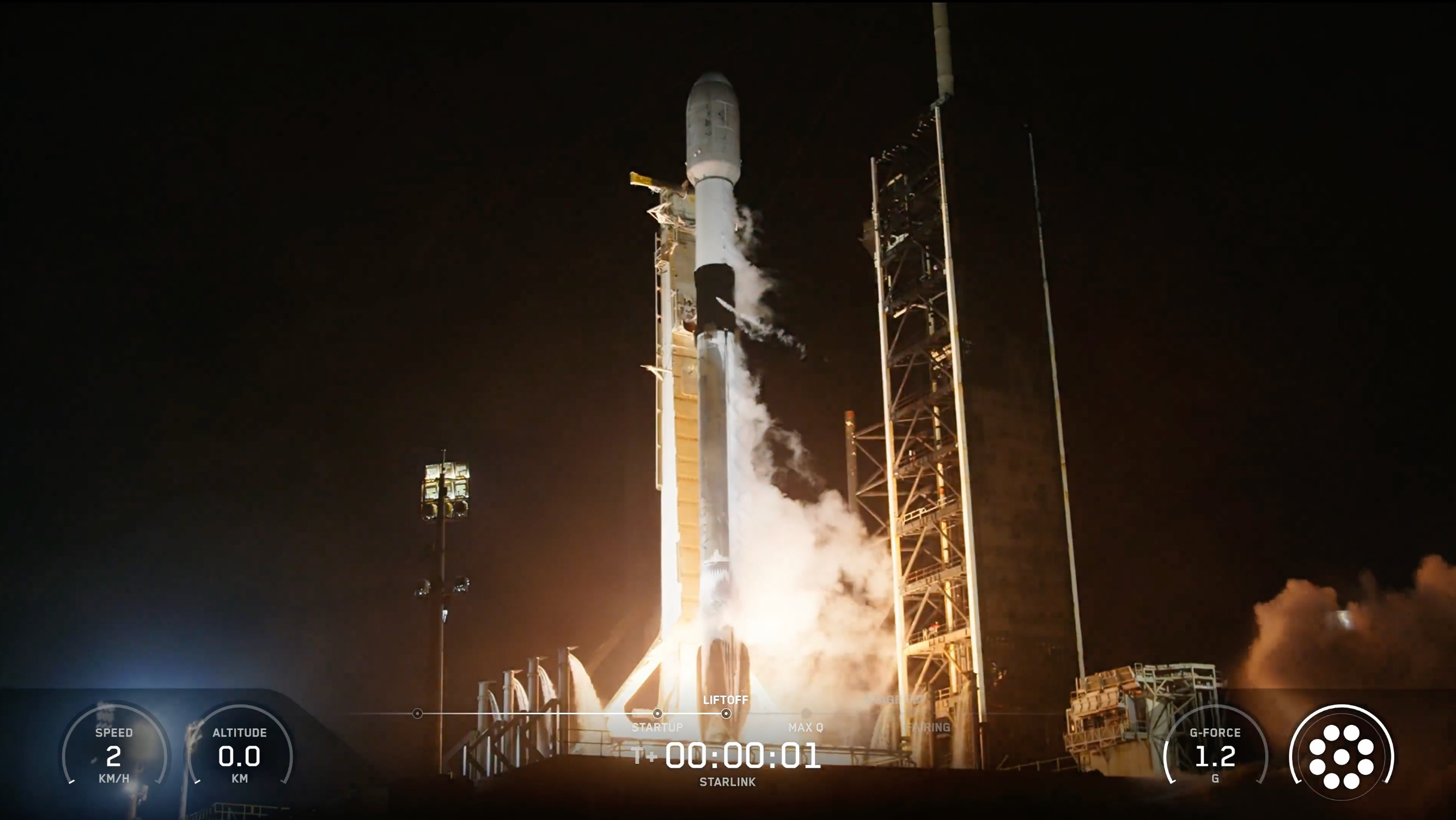SpaceX launches the 100th mission of the year from Florida's Space Coast

Another SpaceX launch, another milestone.
A Falcon 9 rocket launched from Florida's Cape Canaveral Space Force Station tonight (Nov. 20) at 10:39 p.m. EST (0339 GMT on Nov. 21), carrying 29 of SpaceX's Starlink internet satellites to orbit.
It was the 100th liftoff of the year from the Sunshine State, a nice round number that had never been reached before.
The rocket's first stage came back to Earth as planned about 8.5 minutes after liftoff tonight, touching down in the Atlantic Ocean on the SpaceX droneship "Just Read the Instructions." It was the 23rd flight for this particular booster, which carries the designation 1080.
The Falcon 9's upper stage, meanwhile, continued hauling the Starlink craft toward low Earth orbit, where they'll be deployed about 65 minutes after launch.
'SpaceX is responsible for the vast majority of this year's record-breaking rocket traffic from the Space Coast, which features two side-by-side spaceports: Cape Canaveral Space Force Station and NASA's Kennedy Space Center.
Elon Musk's company has now launched a total of 149 Falcon 9 missions in 2025, more than 90 of them from Florida. (The others have flown from Vandenberg Space Force Base in California.) That total, which increases every other day or so, is a record; the previous high, set in 2024, was 132 Falcon 9 launches.
Breaking space news, the latest updates on rocket launches, skywatching events and more!
SpaceX has also launched five suborbital test flights of its giant Starship Mars rocket in 2025, all of them from its Starbase site in South Texas.

Michael Wall is a Senior Space Writer with Space.com and joined the team in 2010. He primarily covers exoplanets, spaceflight and military space, but has been known to dabble in the space art beat. His book about the search for alien life, "Out There," was published on Nov. 13, 2018. Before becoming a science writer, Michael worked as a herpetologist and wildlife biologist. He has a Ph.D. in evolutionary biology from the University of Sydney, Australia, a bachelor's degree from the University of Arizona, and a graduate certificate in science writing from the University of California, Santa Cruz. To find out what his latest project is, you can follow Michael on Twitter.
You must confirm your public display name before commenting
Please logout and then login again, you will then be prompted to enter your display name.
